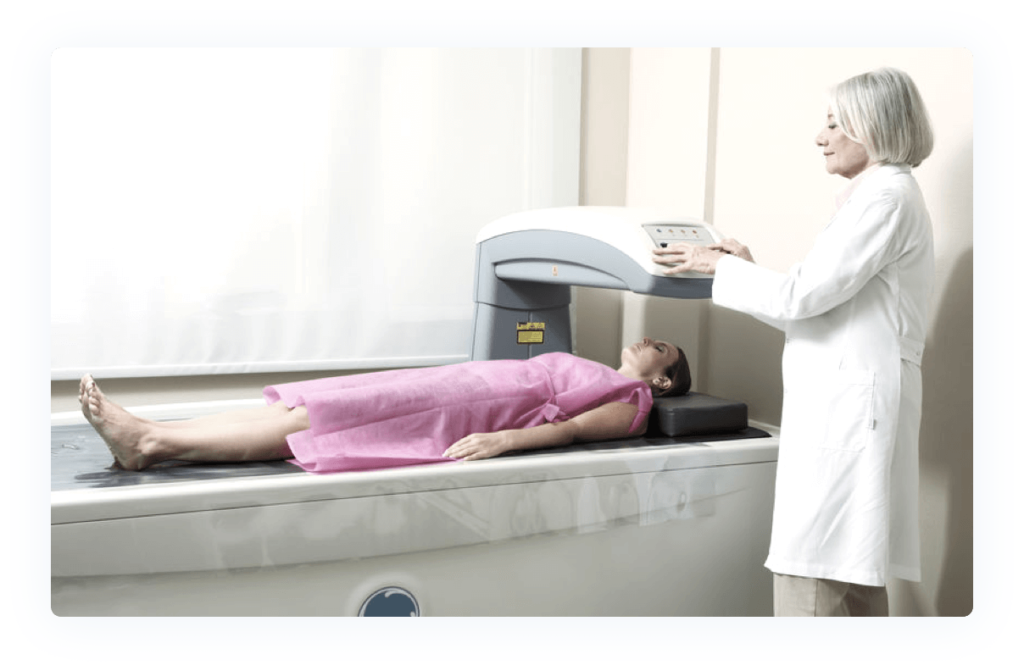Know your risk of osteoporosis now, to prevent debilitating fractures later
Bone densitometry, also known as a bone density test or scan, allows physicians to check your body for osteoporosis. This is a chronic condition caused by a low level of bone calcium, resulting in weak bones that can increase your risk of fractures.
How Does It Work?
The technology involves a low dose of ionizing radiation, which is used to image and measure the bone density of your hips and lower spine. Doctors analyze these results to detect possible bone loss.
Bone densitometry, also known as DEXA or DXA, is noninvasive and painless.

Do I Need a Bone Density Scan?
Bone densitometry is used to diagnose osteoporosis, a condition known as the thinning and weakening of bones; and osteopenia, a condition that leads to reduced bone mass. Osteoporosis can increase your risk of painful fractures, if left untreated. The key is early diagnosis. With bone densitometry, your doctor can assess structural changes before it leads to fragility, which allows early intervention.
You should consider getting a bone density testing if you:
- Are not taking estrogen and are a postmenopausal woman
- Use medications that result in bone density loss
- Suffer from diseases including hyperthyroidism and hyperparathyroidism
- Have experienced any sort of fracture from a previous incident
- Have been diagnosed with liver disease, kidney disease, type 1 diabetes
- Come from a family with a history of osteoporosis
The Advantages of Bone Densitometry
The best thing about bone densitometry is that it’s quick and simple. It’s a painless, noninvasive procedure that requires no anesthesia.
Radiation exposure in bone densitometry is minimal, widely considered safe for all patients.
If you undergo treatment for osteoporosis, continuing regular bone densitometry will help your physician evaluate the effectiveness of your ongoing care plan.
